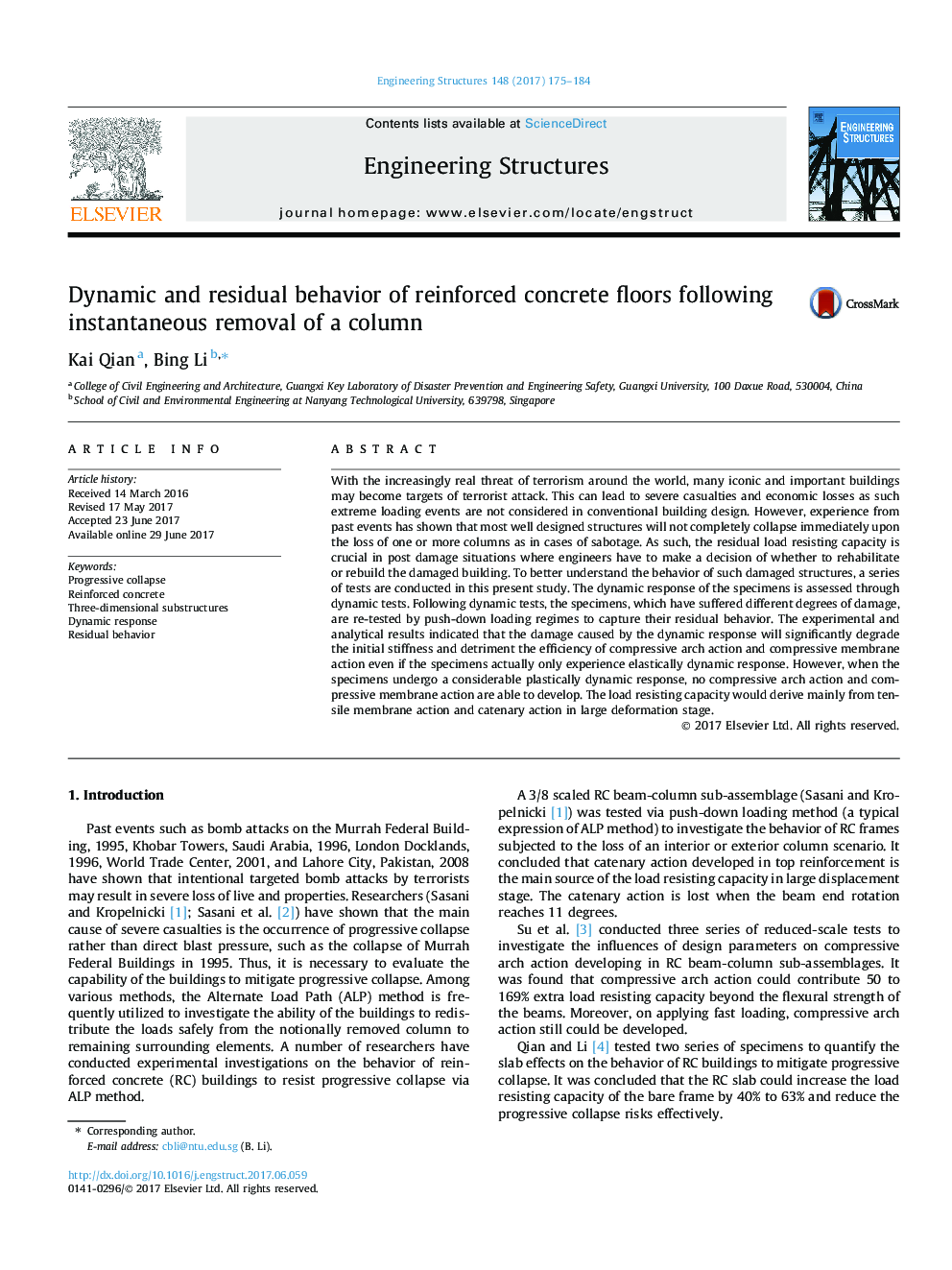| Article ID | Journal | Published Year | Pages | File Type |
|---|---|---|---|---|
| 4919991 | Engineering Structures | 2017 | 10 Pages |
Abstract
With the increasingly real threat of terrorism around the world, many iconic and important buildings may become targets of terrorist attack. This can lead to severe casualties and economic losses as such extreme loading events are not considered in conventional building design. However, experience from past events has shown that most well designed structures will not completely collapse immediately upon the loss of one or more columns as in cases of sabotage. As such, the residual load resisting capacity is crucial in post damage situations where engineers have to make a decision of whether to rehabilitate or rebuild the damaged building. To better understand the behavior of such damaged structures, a series of tests are conducted in this present study. The dynamic response of the specimens is assessed through dynamic tests. Following dynamic tests, the specimens, which have suffered different degrees of damage, are re-tested by push-down loading regimes to capture their residual behavior. The experimental and analytical results indicated that the damage caused by the dynamic response will significantly degrade the initial stiffness and detriment the efficiency of compressive arch action and compressive membrane action even if the specimens actually only experience elastically dynamic response. However, when the specimens undergo a considerable plastically dynamic response, no compressive arch action and compressive membrane action are able to develop. The load resisting capacity would derive mainly from tensile membrane action and catenary action in large deformation stage.
Related Topics
Physical Sciences and Engineering
Earth and Planetary Sciences
Geotechnical Engineering and Engineering Geology
Authors
Kai Qian, Bing Li,
